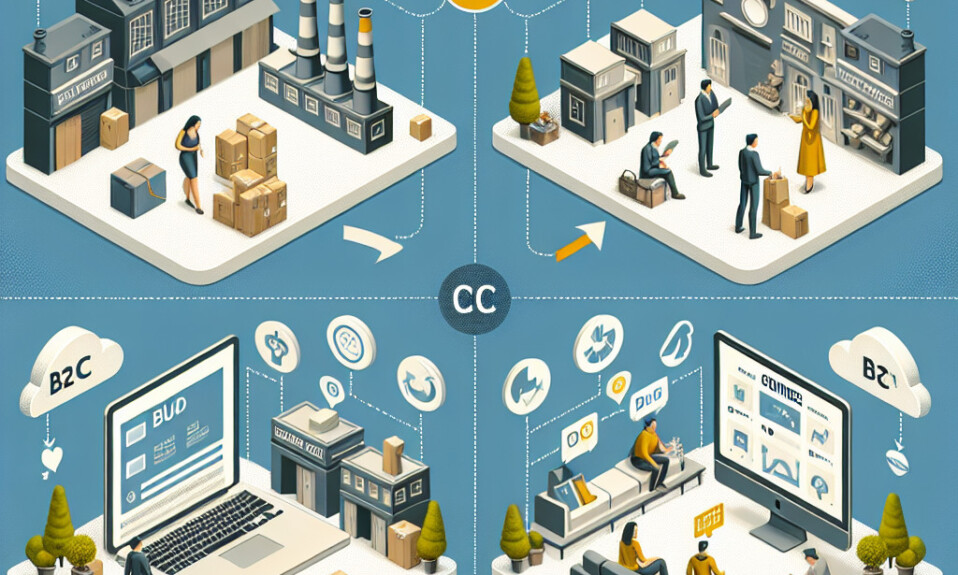- Advantages and disadvantages of time and materials contracts
- Factors to consider when choosing between fixed price and time and materials
- Case studies comparing fixed price and time and materials contracts
- The role of project management in successful fixed price and time and materials contracts
- Common misconceptions about fixed price and time and materials contracts
- The impact of project size on pricing model selection
- How to measure and track progress in fixed price and time and materials contracts
- How to assess and manage project risks in both pricing models
Advantages and disadvantages of time and materials contracts
Advantages:
- Flexibility: Time and materials contracts allow for changes to be made during the project without the need for renegotiation.
- Transparency: Clients can see exactly how much time and materials are being used, providing a clear breakdown of costs.
- Cost control: Clients only pay for the actual work done and materials used, reducing the risk of overpaying.
- Quality control: Contractors are incentivized to use materials efficiently and complete the project in a timely manner to avoid additional costs.
- Risk sharing: Both parties share the risk of unexpected delays or changes, leading to a more collaborative relationship.
Disadvantages:
- Uncertainty: Clients may be unsure of the final cost of the project, as it can vary depending on the time and materials used.
- Cost overruns: If the project takes longer than expected or requires more materials, the final cost can exceed the initial estimate.
- Disputes: Differences in opinion on the amount of time or materials used can lead to disagreements between the client and contractor.
- Complexity: Managing and tracking the time and materials used can be more complicated than a fixed-price contract.
- Trust issues: Clients may question the contractor’s motives and worry about potential overcharging for time and materials.
In conclusion, time and materials contracts offer flexibility and transparency, but they also come with risks such as uncertainty and cost overruns. It is important for both parties to communicate effectively and establish clear expectations to ensure a successful project.
#timeandmaterials #contracts #advantages #disadvantages #flexibility #transparency #costcontrol #qualitycontrol #risksharing #uncertainty #costoverruns #disputes #complexity #trustissues
Factors to consider when choosing between fixed price and time and materials
Fixed Price
Fixed price contracts are agreements where the price is set at the beginning of the project and does not change, regardless of the actual time and materials used. This can provide a sense of security for both the client and the contractor, as the cost is known upfront.
- Predictability: With a fixed price contract, the client knows exactly how much they will be paying for the project.
- Risk: The contractor takes on the risk of any cost overruns, which can lead to tighter project management.
- Scope: The scope of work is clearly defined, which can help prevent scope creep.
Time and Materials
Time and materials contracts, on the other hand, are agreements where the client pays for the actual time spent and materials used on the project. This can provide more flexibility, but also more uncertainty.
- Flexibility: Time and materials contracts allow for changes in scope or requirements without renegotiating the contract.
- Transparency: Clients can see exactly how their money is being spent, which can build trust.
- Risk: The client takes on the risk of cost overruns, which can lead to budget concerns.
Factors to consider
When choosing between fixed price and time and materials, it’s important to consider the following factors:
- Project complexity: For simple projects with a well-defined scope, a fixed price contract may be more appropriate. For complex projects with changing requirements, time and materials may be a better option.
- Budget constraints: If the client has a strict budget, a fixed price contract can provide certainty. If the budget is flexible, time and materials may be more suitable.
- Timeline: Fixed price contracts may incentivize contractors to complete the project quickly, while time and materials contracts may allow for more flexibility in scheduling.
- Trust: Building trust between the client and contractor is essential. Time and materials contracts can provide transparency, while fixed price contracts can provide predictability.
Ultimately, the decision between fixed price and time and materials will depend on the specific needs and circumstances of the project. It’s important to carefully consider all factors before making a decision.Hashtags: #fixedprice #timeandmaterials #pricingmodels
Keywords: factors, consider, choosing, fixed price, time and materials
Long-tail phrases: factors to consider when choosing between fixed price and time and materials, advantages and disadvantages of fixed price and time and materials contracts
Case studies comparing fixed price and time and materials contracts
Case Study 1: Fixed Price Contract
In this case study, a software development company was hired to create a new mobile application for a client. The project had a clear scope and timeline, making it a good candidate for a fixed price contract. The company agreed to deliver the completed application for a set price, with any additional costs being the responsibility of the client.
🔹 The fixed price contract provided the client with a clear understanding of the project costs upfront.
🔹 The company was motivated to complete the project on time and within budget to maximize their profits.
🔹 However, any changes or additions to the project scope resulted in additional costs for the client.
Case Study 2: Time and Materials Contract
In this case study, a marketing agency was hired to create a new advertising campaign for a client. The project had a flexible scope and timeline, making it a good candidate for a time and materials contract. The agency agreed to bill the client based on the actual time and materials used during the project.
🔹 The time and materials contract allowed for greater flexibility and adaptability throughout the project.
🔹 The client had more control over the project scope and could make changes as needed without incurring additional costs.
🔹 However, the client had less certainty about the final project costs, as they were based on actual time and materials used.
Conclusion
When choosing between fixed price and time and materials contracts, it is important to consider the specific needs and requirements of your project. Fixed price contracts provide certainty in terms of project costs, while time and materials contracts offer flexibility and adaptability. Ultimately, the best choice will depend on the nature of your project and your priorities.
Hashtags: #fixedprice #timeandmaterials #projectmanagement
Keywords: contracts, case studies, comparison, advantages, disadvantages
Long-tail phrases: choosing between fixed price and time and materials contracts, differences between fixed price and time and materials contracts, benefits of fixed price contracts, advantages of time and materials contracts
#fixedprice #timeandmaterials #projectmanagement, contracts, case studies, comparison, advantages, disadvantages, choosing between fixed price and time and materials contracts, differences between fixed price and time and materials contracts, benefits of fixed price contracts, advantages of time and materials contracts.
The role of project management in successful fixed price and time and materials contracts
Fixed price contracts
Fixed price contracts are agreements where the project is completed for a set price, regardless of the actual costs incurred during the project. This type of contract is often used when the scope of the project is well-defined and there is little risk of scope creep or changes in requirements. However, fixed price contracts can be risky for both the client and the contractor, as any unexpected costs or delays can eat into the contractor’s profit margin.
In order to successfully manage a fixed price contract, project managers must:
– Define the scope of work clearly and accurately to avoid any misunderstandings or disputes later on.
– Develop a detailed project plan that outlines the tasks, milestones, and deliverables of the project.
– Monitor progress closely to ensure that the project stays on track and within budget.
– Communicate effectively with all stakeholders to manage expectations and address any issues that arise.
– Manage risks proactively to minimize the impact of any unforeseen events on the project.
Time and materials contracts
Time and materials contracts are agreements where the client pays for the actual time and materials used to complete the project. This type of contract is often used when the scope of the project is uncertain or likely to change, as it allows for greater flexibility and adaptability. However, time and materials contracts can be challenging to manage, as the final cost of the project is not known until it is completed.
In order to successfully manage a time and materials contract, project managers must:
– Track time and expenses accurately to ensure that the client is billed correctly for the work performed.
– Manage resources effectively to optimize productivity and minimize costs.
– Communicate regularly with the client to keep them informed of progress and any changes to the scope or budget.
– Adapt to changes in the project scope or requirements quickly and efficiently.
– Ensure quality standards are met throughout the project to deliver a successful outcome.
In conclusion, project management plays a crucial role in the success of both fixed price and time and materials contracts. By effectively defining the scope, developing a detailed plan, monitoring progress, communicating with stakeholders, managing risks, tracking time and expenses, managing resources, adapting to changes, and ensuring quality, project managers can navigate the complexities of these contracts and deliver successful outcomes for their clients.
#projectmanagement #fixedpricecontracts #timeandmaterialscontracts #success #scope #budget #timeline #communication #riskmanagement #qualityassurance
#projectmanagers #contractors #stakeholders #deliverables #milestones #progressmonitoring #resourcemanagement #changemanagement #flexibility #adaptability #clientexpectations #projectplanning #projectexecution #projectdelivery
Common misconceptions about fixed price and time and materials contracts
Fixed Price Contracts
Fixed price contracts are agreements where the price is set at the beginning of the project and does not change, regardless of the actual costs incurred during the project. This type of contract is often used when the scope of work is well-defined and there is little risk of changes or delays.
| Myth | Reality |
|---|---|
| Myth: Fixed price contracts are always cheaper for the client. | Reality: While fixed price contracts can provide cost certainty, they may not always be the most cost-effective option, especially if there are changes or delays during the project. |
| Myth: Fixed price contracts are less risky for the client. | Reality: Fixed price contracts can actually be more risky for the client if the scope of work is not well-defined or if there are unexpected changes during the project. |
Time and Materials Contracts
Time and materials contracts are agreements where the client pays for the actual time spent and materials used during the project. This type of contract is often used when the scope of work is unclear or likely to change, making it difficult to set a fixed price at the beginning of the project.
| Myth | Reality |
|---|---|
| Myth: Time and materials contracts are always more expensive for the client. | Reality: While time and materials contracts can be more flexible, they may result in higher costs for the client if the project takes longer than expected or if there are changes in the scope of work. |
| Myth: Time and materials contracts are less risky for the client. | Reality: Time and materials contracts can be risky for the client if there is no cap on the total cost or if the project takes longer than anticipated. |
Conclusion
It is important for businesses to understand the differences between fixed price and time and materials contracts in order to make informed decisions about which type of contract is best suited for their projects. While fixed price contracts provide cost certainty, they may not always be the most cost-effective option, especially if there are changes or delays. On the other hand, time and materials contracts offer flexibility but can result in higher costs if the project takes longer than expected. By dispelling these common misconceptions, businesses can better navigate the complexities of contract negotiations and ensure successful project outcomes.
#fixedprice #timeandmaterials #contracts #misconceptions #business #costs #risks #scopeofwork
Keywords: fixed price, time and materials, contracts, misconceptions, business, costs, risks, scope of work
Long-tail phrases: common misconceptions about fixed price contracts, common misconceptions about time and materials contracts, differences between fixed price and time and materials contracts, cost certainty in fixed price contracts, flexibility in time and materials contracts.
The impact of project size on pricing model selection
Factors to consider when selecting a pricing model
There are several factors that businesses should consider when selecting a pricing model for their projects. These factors include the size of the project, the complexity of the project, the level of risk involved, and the desired level of control over costs. In this section, we will focus on the impact of project size on pricing model selection.
Impact of project size
The size of a project can have a significant impact on the pricing model that is selected. Larger projects typically require more resources, such as manpower, materials, and equipment, which can increase the overall cost of the project. In addition, larger projects may involve more complexity, which can also impact the cost of the project. As a result, businesses may need to consider different pricing models for larger projects compared to smaller projects.
| Project Size | Pricing Model |
|---|---|
| Small | Fixed Price |
| Medium | Time and Materials |
| Large | Cost-Plus |
As shown in the table above, businesses may choose different pricing models based on the size of the project. For small projects, a fixed price model may be more appropriate, as the scope of the project is well-defined and the cost is relatively predictable. For medium-sized projects, a time and materials model may be more suitable, as it allows for flexibility in the project scope and cost. For larger projects, a cost-plus model may be preferred, as it provides greater transparency and control over costs.
Conclusion
In conclusion, the size of a project can have a significant impact on the pricing model that is selected. Businesses should carefully consider the size of their projects and the associated resource requirements when choosing a pricing model. By selecting the right pricing model for their projects, businesses can ensure that they are able to effectively manage costs and deliver successful outcomes.
#projectsize #pricingmodel #selection #business #resources #costs
słowa kluczowe: project size, pricing model, selection, business, resources, costs
frazy kluczowe: impact of project size on pricing model selection, factors to consider when selecting a pricing model, impact of project size, conclusion.
How to measure and track progress in fixed price and time and materials contracts
1. Define clear milestones and deliverables 🎯
– Clearly define the scope of work and break it down into manageable milestones and deliverables.
– Use project management tools to track progress against these milestones and deliverables.
2. Establish key performance indicators (KPIs) 📊
– Identify KPIs that are relevant to the project and track them regularly to gauge progress.
– Use KPIs to identify areas where improvements can be made and take corrective action as needed.
3. Monitor and report progress regularly 📈
– Set up regular progress meetings with stakeholders to review progress and address any issues that may arise.
– Provide regular progress reports to keep everyone informed and on track.
4. Use earned value management (EVM) techniques 💰
– Implement EVM techniques to measure project performance and forecast future performance.
– Use EVM to track progress against the budget and schedule and make adjustments as needed.
5. Communicate effectively with all stakeholders 🗣️
– Keep all stakeholders informed of progress and any changes to the project scope or timeline.
– Encourage open communication and collaboration to ensure that everyone is on the same page.
By following these tips, project managers can effectively measure and track progress in fixed price and time and materials contracts, ensuring that projects are completed successfully and on time. Remember, effective progress tracking is key to project success!
#projectmanagement #progressmeasurement #fixedpricecontracts #timematerialscontracts
#milestones #KPIs #EVM #communication #stakeholders #deliverables #progressreports
Keywords: project management, progress tracking, fixed price contracts, time and materials contracts, milestones, KPIs, EVM, communication, stakeholders, deliverables, progress reports
Long-tail phrases: How to measure progress in fixed price contracts, Tips for tracking progress in time and materials contracts, Importance of progress tracking in project management, Effective communication with stakeholders in project management.
How to assess and manage project risks in both pricing models
Ryzyko jest nieodłącznym elementem każdego projektu. Niezależnie od tego, czy pracujesz nad małym projektem dla jednego klienta, czy nad dużym przedsięwzięciem dla wielu interesariuszy, musisz być świadomy potencjalnych zagrożeń i umiejętnie nimi zarządzać. W dzisiejszym artykule omówimy, jak oceniać i zarządzać ryzykiem w obu modelach cenowych: stałym i zmiennym.
Model cenowy stały
W modelu cenowym stałym ustalasz cenę projektu z góry i zobowiązujesz się do dostarczenia określonego zakresu prac w określonym czasie. Jest to popularny model w branży IT, gdzie klienci często preferują stałe ceny, aby uniknąć nieprzewidywalnych kosztów. Jednakże, ryzyko w tym modelu jest większe, ponieważ jeśli projekt przekroczy zakładany czas lub zasoby, to firma ponosi straty.
Ocena ryzyka w modelu cenowym stałym polega na identyfikacji potencjalnych zagrożeń, ich prawdopodobieństwa wystąpienia oraz wpływu na projekt. Następnie należy opracować strategie zarządzania ryzykiem, takie jak unikanie, przenoszenie, zmniejszanie czy akceptowanie ryzyka. W tabeli poniżej przedstawiamy przykładową ocenę ryzyka w modelu cenowym stałym:
| Zagrożenie | Prawdopodobieństwo | Wpływ | Strategia zarządzania |
|---|---|---|---|
| Opóźnienie w dostawie sprzętu | Średnie | Wysoki | Zmniejszenie ryzyka poprzez rezerwowanie dodatkowego czasu na dostawę |
| Brak komunikacji z klientem | Niskie | Średni | Unikanie ryzyka poprzez regularne spotkania z klientem |
Model cenowy zmienny
W modelu cenowym zmiennym cena projektu zależy od ilości pracy wykonanej lub zasobów zużytych. Jest to bardziej elastyczny model, który pozwala na dostosowanie się do zmieniających się warunków projektu. Jednakże, ryzyko w tym modelu również istnieje, ponieważ nie ma gwarancji, że klient nie zmieni zakresu prac w trakcie realizacji projektu.
Ocena ryzyka w modelu cenowym zmiennym również polega na identyfikacji, analizie i zarządzaniu zagrożeniami. W tabeli poniżej przedstawiamy przykładową ocenę ryzyka w modelu cenowym zmiennym:
| Zagrożenie | Prawdopodobieństwo | Wpływ | Strategia zarządzania |
|---|---|---|---|
| Zmiana zakresu prac przez klienta | Wysokie | Wysoki | Przeniesienie ryzyka poprzez umowę na dodatkowe prace |
| Problemy z zespołem projektowym | Średnie | Średni | Zmniejszenie ryzyka poprzez szkolenia i wsparcie dla zespołu |
Podsumowanie
Ocena i zarządzanie ryzykiem w modelach cenowych jest kluczowym elementem skutecznego zarządzania projektami. Niezależnie od tego, czy pracujesz w modelu cenowym stałym czy zmiennym, musisz być świadomy potencjalnych zagrożeń i umiejętnie nimi zarządzać. Pamiętaj o identyfikacji, analizie i opracowaniu strategii zarządzania ryzykiem, aby zminimalizować negatywne skutki dla projektu.
hashtagi: #zarządzanieryzykiem #modelcenowy #ocenaryzyka #zarządzanieprojektami
słowa kluczowe: ocena ryzyka, zarządzanie ryzykiem, model cenowy, projekt, zagrożenia
frazy kluczowe: jak zarządzać ryzykiem w modelach cenowych, strategie zarządzania ryzykiem, ocena zagrożeń w projektach, zarządzanie ryzykiem w IT.
- The safety considerations of laser cleaning - 13 May 2024
- The difference between B2B and B2C e-commerce - 13 May 2024
- Fixed price or time and materials – what to choose? - 2 March 2024










